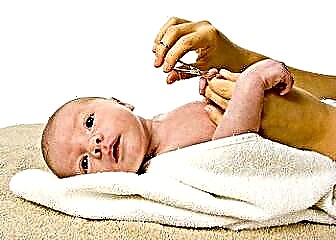
Among the laboratory methods that help determine the state of health of children, a blood test is especially in demand. Its results show the level of hemoglobin, the number of different blood cells, their ratio and other parameters. The doctor first of all evaluates the erythrocytes and leukocytes in the blood test form, but platelets are no less important cells.

Seeing that their number is below the norm, parents begin to worry. But in order to understand whether a decrease in the number of platelets is dangerous for the health of a son or daughter, you first need to figure out what this means, why there are few platelets in a child's blood, and also what to do in such a situation.
Why are platelets needed?
These blood cells, also called platelets, play a large role in blood clotting. In particular, if a blood vessel is damaged, platelets are involved in the formation of a clot that closes the damage, which stops the bleeding.

What platelet count is considered low
The norm of platelets under the age of one year is called an indicator above 180 x 109/ l, and for children over a year old - 160 x 109/ l.
In newborns, the number of platelets in a liter of blood can be 100 x 109, which is also considered a variant of the norm.
Gradually the number of platelets rises, reaching at least 150 x 10 at 10 days of age9/ l.
If the blood test of a child of any age indicates that the platelets are less than 100 x 109/ l, this condition is called thrombocytopenia. As a result of a lower number of platelets, the blood thinns and clots poorly, which leads to an increased risk of both internal and external bleeding.

What causes a decrease in platelets
Low platelet counts are caused by:
- Violation of the formation of such cells in the bone marrow. Their production can be inhibited due to viral infections, tumors, drugs and other influences.
- The destruction of platelets under the influence of various factors, for example, as a result of the production of antibodies to these blood cells in an autoimmune disease or when infected with a certain strain of E. coli.
- Redistribution of blood cells, which results in a lower number of platelets in the bloodstream. The reason for this change is the enlargement of the spleen, which is often observed in hepatitis.
During adolescence in girls, the number of such blood cells may decrease due to the first heavy menstruation.

The presenters of the next video will tell you for what reasons the level of platelets in the blood can be lowered.
Thrombocytopenia causes
Allocate primary thrombocytopenia, which is an independent disease. It is also called idiopathic thrombocytopenic purpura. The exact cause of this pathology has not yet been clarified, but doctors associate it with an autoimmune process, which is often activated after a viral disease or vaccination.
More often, a decrease in the number of platelets is only one of the symptoms of such diseases:
- Bacterial infections.
- Hemolytic uremic syndrome.
- Anemia.
- DIC syndrome.
- Allergic reactions, such as to a drug.
- Hepatitis, measles, rubella and other viral infections.
- Parasitic invasions.
- Asphyxia in newborns.
- Diseases of the thyroid gland.
- Diseases of the blood.
- Autoimmune pathologies.
- Heavy metal poisoning.
- Tuberculosis.
- Malignant tumors.
- Acute renal failure.

If a child is treated for a long time with the use of corticosteroids, diuretics, antibiotics and some other drugs, this will also affect the blood test, including the platelet level.
Severity
Depending on the indicator of the blood test and the condition of the child, there are:
- Mild or latent thrombocytopenia. With her, platelets in a liter of blood are from 75 to 99 x 109... With such a decrease, any clinical manifestations may be absent and the problem is often detected only after a blood test.
- Moderate thrombocytopenia. It is diagnosed if it is determined in the child's blood from 50 to 74 x 109/ L of platelets. Symptoms with such a decrease are mild. Often it is represented by frequent bruising and more prolonged bleeding, which can still end on its own.
- Moderate thrombocytopenia. In this condition, platelets range from 20 to 49 x 109/ l, and stopping bleeding will require effort. A child with such a decrease in platelets must be treated.
- Severe thrombocytopenia. It is characterized by a decrease in the number of platelets less than 20 x 109/ l, which poses a danger to the life of the baby, therefore, requires urgent hospitalization.

Symptoms
A decrease in platelets in childhood can manifest itself:
- Frequent bruising (sometimes they can even occur from touching).
- Prolonged bleeding from a cut or abrasion.
- Point rashes on the skin, as well as the appearance of spider veins or nets.
- Periodic occurrence of nosebleeds.
- Headaches.
- Bleeding of the mucous membrane of the gums.
- Acquisition of pink or red urine.
- The appearance of vomiting with blood or blackening of feces.
- Heavy and too long periods during adolescence.

In some children, the spleen is enlarged, and in severe cases, hemorrhages occur with different localization, for example, in the retina or brain tissue.
When to see a doctor
Parents should take their daughter or son to a doctor as soon as possible if:
- Cut bleeding does not stop for more than 10 minutes.
- Bruises often form on the body, and they appear without effort.
- The child often complains of a severe headache.
- The baby's urine turned red.
- The feces acquired a dark color (turned black).
Treatment
The doctor's tactics will depend on the reason why the child's platelets have dropped below normal. In most cases, after treating the underlying condition, such as anemia, the platelet count will gradually return.
If the platelet reduction is severe, the child should stay in bed. If he has a bleeding of the oral mucosa, then all food is given chilled. In the treatment of such a problem, immunoglobulins (they are administered intravenously), rutin, corticosteroid hormones, anti-rhesus serum and other drugs are used. If indicated, the child is transfused with platelet mass from the donor or the spleen is removed.

What to do with a slight decrease
If platelets are slightly lowered, your doctor will recommend:
- Change the child's diet by adding foods high in iron, vitamins C and A to the diet. Children with thrombocytopenia are advised to give buckwheat porridge, meat dishes, beets, carrots, cabbage, apples, fish, parsley, olive oil, bananas, nuts and others products. It is advised to refuse the use of watermelon, seaweed, lingonberries, cranberries, strawberries, strawberries, as well as tomato juice.
- Monitor physical activity. The child should get enough rest, sleep at least 10-12 hours a day, play quiet games.

As for traditional medicine recipes, with a slight decrease in the number of platelets, the child can be given nettle juice mixed 1: 1 with milk (only 100 ml per dose) or sesame oil (a tablespoon per dose). The funds are taken three times a day, half an hour before meals, but before using them, you should definitely discuss this issue with your pediatrician.



